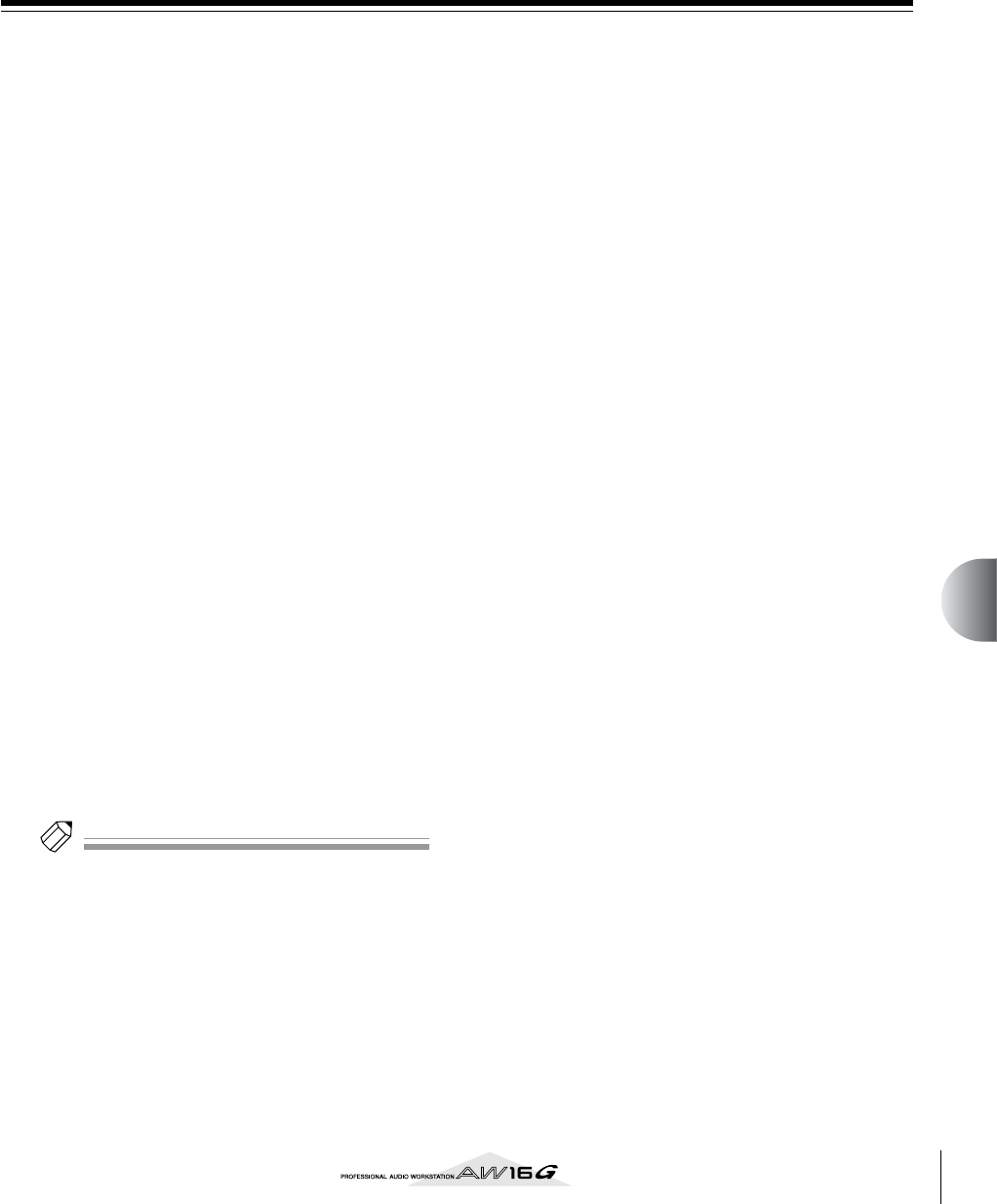
123
Chapter 12
Track editing
This chapter explains how you can edit the audio data recorded in an
audio track, and how to edit the pad events recorded in a pad track.
What you can do using editing commands
The AW16G provides various editing commands for edit-
ing the recorded audio tracks and pad tracks. Editing
commands are functions that let you specify a track or
region, and delete or move the data of that track or
region. The AW16G provides the following editing com-
mands.
● ERASE
Erases the data of the specified region.
● DELETE
Deletes the data of the specified region. Any data that
follows the deleted region will be moved forward by
the corresponding distance.
● INSERT
Inserts blank space into the specified region.
● COPY
Copies the data from the specified region to the
desired location of the desired track.
● MOVE
Moves the data from the specified region to the
desired location of the desired track. The move-
source data will be erased.
● EXCHANGE
Exchanges data between the specified tracks.
● TIME COMP/EXP (Time Compression/Expansion)
Adjusts the length of the specified region of an audio
track without affecting its pitch.
● PITCH CHANGE
Adjusts the pitch of the specified region of an audio
track without affecting its length.
● EXPORT
Writes the specified region of an audio track (or a
sample assigned to a pad) to a WAV file.
Tip!
The EXCHANGE, TIME COMP/EXP, PITCH CHANGE,
and EXPORT commands can only be used on audio
tracks. The remaining commands can be used on either
audio tracks or pad tracks.
Here are some ways in which you can use these editing
commands.
1 Erase unwanted regions
You can use the ERASE command to erase just a
specific region of a specific track. For example, this
provides a convenient way to erase a few wrong
notes from a performance, or to eliminate noise that
occurred while an instrument was not playing.
B Change the structure of the tracks
You can use the EXCHANGE command to
exchange an entire track with another track. By
using this command you can bring tracks of widely
separated track numbers closer to each other for
easier operation during mixdown.
You can use the COPY or MOVE commands to
copy/move the specified region of a track to a differ-
ent track. This is convenient when you have
recorded a solo part among two or more virtual
tracks, and want to assemble the best parts into a
single track.
C Change the structure of the song
You can use the DELETE or COPY commands to
delete/copy entire tracks, changing the structure of
the song itself. Even after all parts of the song have
been recorded, you can use this method to adjust
the length of the song, for example by shortening
the number of measures or increasing the number
of choruses.
D Create special effects
You can also use editing commands to create spe-
cial effects. For example, you can copy a guitar or
vocal solo part to another track and use the PITCH
CHANGE command to slightly detune one of these
tracks, creating a chorus effect without using the
internal effect processor. By applying the PITCH
CHANGE command to a drum track to lower the
pitch, you can create a unique lo-fi effect.
